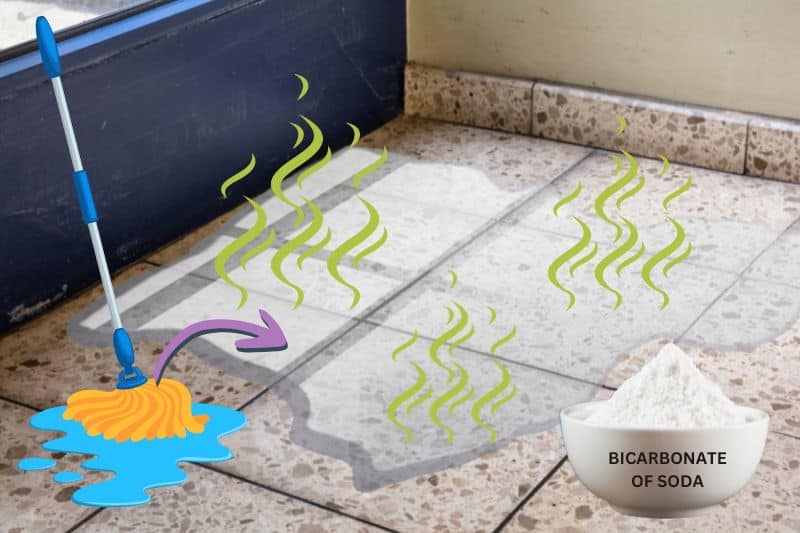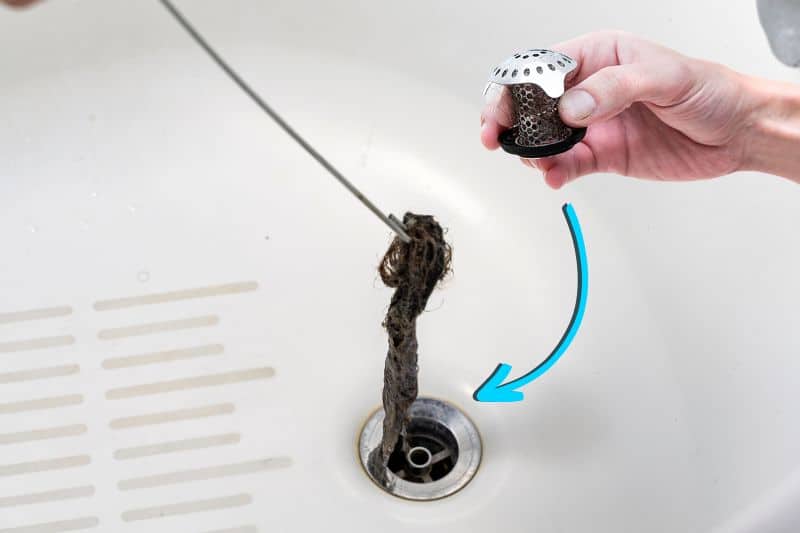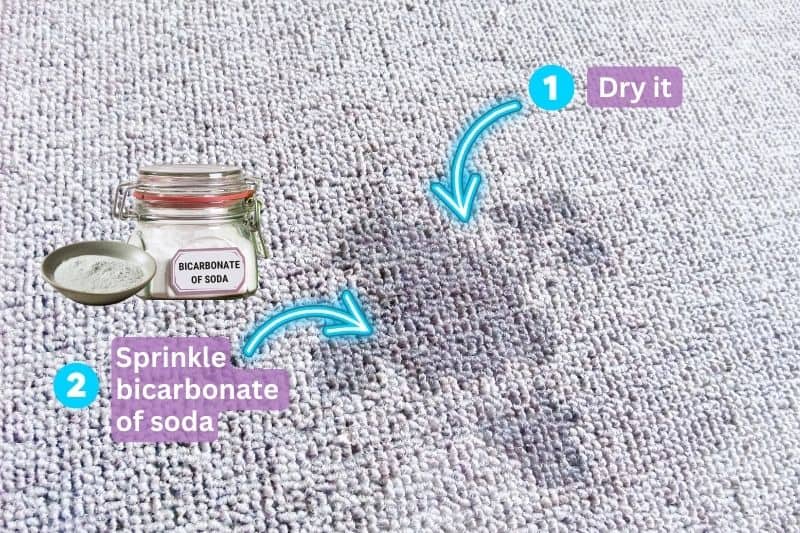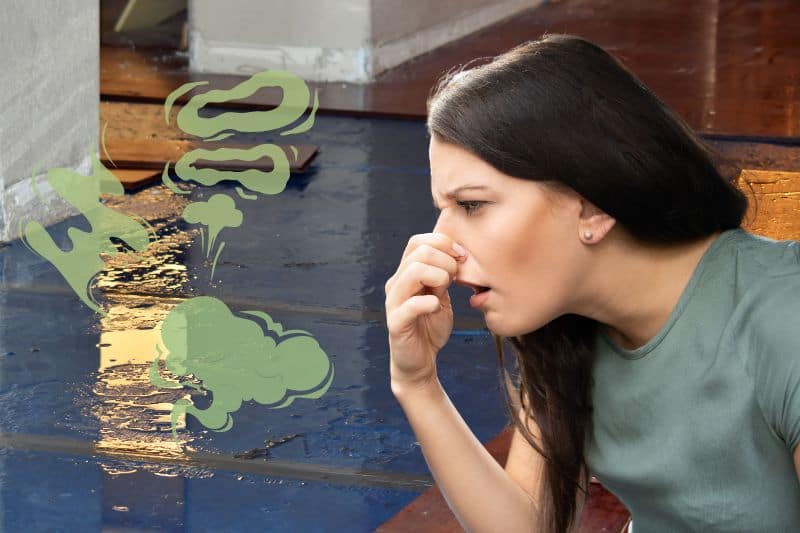If you’ve got a sewage-like, come rotten eggs smell permeating throughout your property, it’s a sure sign that stagnant water is resting quietly in your home.
It’s a really unpleasant sort of odour and it gets worse the longer you leave it.
Your goal is to remove the stagnant water and stench at warp speed! So, read on to discover what you need to do to get rid of the odour of stagnant water.
What Is Stagnant Water?
Stagnant water is water that is left in one position for a long time. There’s no flow or current to move this water around, so it sits in one place and gradually gets bacteria-ridden and dirtier as time goes by.
If the stagnant water has come from a burst pipe, it sort of looks like normal water, but it gets cloudier and grubbier looking as it ages.
However, if stagnant water is caused by flooding, it’s usually teeming with germs, and sometimes sewage. So, it can be even grottier and extra pungent!
It’s imperative that stagnant water is removed, and that you treat any areas that the liquid has come into contact with immediately.
Failing to remove the water, or clean up the mess the water has left behind, can lead to structural damage in a property, and it can have serious health implications for those in the building. Plus, the longer you leave the stagnant water, the worse the problem gets.
Potential structural damages include, but are not limited to ruined floors and carpets, walls, wooden structures and furniture, plasterboard, concrete, and general furniture.
In turn, if water is left untreated, mould will start to grow, and this brings about its own problems, including potential respiratory issues!
In addition to this, stagnant water, especially pools caused by flooding, are breeding grounds for bacteria, parasites and various viruses. So, you need to be incredibly careful, and act quickly to remove the dreaded mess from your home.
Now you know what stagnant water is, you can appreciate how important it is to remove the water from your property, treat the issue, and remove the smell.
How to Remove the Smell of Stagnant Water
Follow the steps below to remove the stench of stagnant water from your property.
Step 1: Find the cause of the problem

The first step is to try and locate the cause of the problem. In the case of stagnant water, you’re looking for where the water is coming from.
There are multiple places to consider:
- Leaking pipework
- Burst pipework
- A leaking appliance, like a washing machine or dishwasher
- A hole in the roof, meaning that rainwater is dripping into the house
- Windows are not sealed correctly
- Flood damage
- Water being left in sinks, bathtubs and shower trays – this encourages mould/mildew
- Blocked drains
Once you’ve found out where the water is coming from, you can go on to treat the problem in an appropriate manner.
Step 2: Treat the problem
After locating the cause of the problem, you can move on to sorting the issue out.
If you’ve caught the issue quickly, you might be able to treat the issue yourself, but in a lot of cases you’ll have to call a professional in to help you out.
In addition to this, you’ll likely have to rent specialised equipment to remove large pools of stagnant water and to dry your property out.
Here are some of the things you might need to do to treat the problem:
- Call a plumber out to fix a broken or leaking pipe.
- Fix a leaking appliance yourself or call in a professional to help you.
- Ask a builder to sort out any structural damage – fix a roof.
- Get new windows fitted by a professional, and make sure they’re sealed correctly.
- In the case of a flood, you should follow the advice given by GOV.uk and the National Flood Forum. You should also contact your insurance company for assistance.
- Remove all contaminated goods from the property.
- Rent tools to get rid of the stagnant water.
- Rent tools to dry the property out properly.
- Ensure the property is structurally safe.
- Replace damaged items, or perhaps you could clean and dry out some goods.
- If the problem is mould/mildew related, you’ll need to remove and clean any infected items, and then clean the mould off the surface with white vinegar/specialised cleaner.
- Clean out drain(s). Remove hair and general debris, so water can flow through the pipework. You can plunge up any gunk, and then pour some bicarbonate of soda and boiling hot water down the plughole to clear it out. Or you could boil several cups of white vinegar and pour them down the drain. Once you’ve treated the drain you can flush it clean by pouring more boiling water down it.
When you’ve located and treated the problem, you might still notice that there’s a lingering smell of stagnant water around the place.
It’s not uncommon for the smell to last a while, so read on to find out what to do about it.
Step 3: Remove the smell of stagnant water

Got a whiffy pong of stagnant water in your property? Try the solutions below:
- The easiest way to remove the smell of stagnant water from your property is to make sure that you’ve cleaned out all the stagnant water, treated and disinfected every contaminated item, and made sure everything is completely dry before you replace items and move back into the building.
- Double check to make sure you sorted the main cause of the problem out properly. Is the leaking pipe still leaking? Has the roof been fixed correctly? Is the dishwasher losing water? – sort any issues out!
- Have another look around the property to make sure you didn’t miss any other issues. Is there another leaking appliance? Has another bit of pipework burst? – sort any issues you see out.
- Make sure that any items that may have been affected by the stagnant water have either been thrown out, or have been cleaned and dried properly.
- You can leave bowls of bicarbonate of soda around your home to absorb the smell of stagnant water.
- If there’s a lingering smell, you could sprinkle bicarbonate of soda over your carpets, leave it for a day or two, and then hoover the surface.
- You could treat upholstery with a mixture of white vinegar and water (test the cleaning solution out first).
- Ensure there’s plenty of air flow in the property.
Tip: If you’ve cleaned and treated your property correctly, and you can still smell stagnant water, it’s likely that something is still wet or damp in your home. It’s your job to source this wet ‘object’, treat it, and dry it out.
It’s not good enough to just settle and accept the smell of stagnant water, because the smell is a warning sign that your watery issue hasn’t been resolved.
If you ignore this sign, you may end up with a bad case of mould in your property, for example. This issue, if left untreated, can go on to cause severe structural damage and health problems for you.
If you cannot find the cause of the issue you should contact a specialist. In turn, they should come over to your property to assess it further.
Step 4: Preventing future problems

When it comes to stagnant water, you really want to prevent it from causing problems in the first place. So, follow the tips below to try and protect your home from such damage:
- Keep an eye on pipework and appliances.
- Check drains and unclog them. It may be worth putting a hair-catcher, like the TubShroom Hair Catcher in a bathtub drain, so hair doesn’t clog up the hole.
- Treat any water-related issues as soon as you can!
- Remove blockages as soon as possible.
- If your property is at risk of being flooded contact a specialised forum, like the National Flood Forum, to get advice on how to protect your home. You should also sign up for free flood warning alerts, put a plan together about what valuable items you need/what to do in the event of a flood, and put measures in place to protect your home.
- If mould is targeting your property, try to make sure there’s good air flow in the home, don’t allow water to pool, wipe away water droplets immediately, use dehumidifiers, and use extractor fans.
How to Get Rid of a Stagnant Water Smell Outside
It’s important to try and locate the source of the problem first and foremost. So, go outside and check your drains and ponds, for example.
If your drains are clogged up, you’ll need to clean them out. Once you’ve done this you can pour bicarbonate of soda and boiling water down the drain to clear it out.
Alternatively, you could pour multiple cups of boiling white vinegar down the drain to loosen debris and to neutralise the odour. Or you could pick up an official drain unblocker.
If your pond is smelling, you should contact a specialist to help you deal with the issue safely. The body of water could be riddled with algae and bacteria.
How to Get Rid of a Stagnant Water Smell from Carpet

To remove the smell of stagnant water from a carpet you’ll need to coat the whole carpet in a layer of bicarbonate of soda.
You’ll then need to leave the carpet alone for up to 48 hours. Once the 48 hours has passed, you can hoover your carpet multiple times to remove the bicarb.
If the smell is still lingering, you can repeat the steps above. Alternatively, you can buy an off-the-shelf carpet cleaner/shampoo and use this to treat the carpet. You’ll need to follow the instructions on the packaging if you’re going to try this.
If you’re struggling to clean the carpet, you could rent a carpet cleaner, or you could ask a carpet cleaning firm to come out to help you.
Of course, if you go down this avenue there are additional costs to think about. So, consider whether or not it would be better to bin the current carpet and buy a new one to replace it.
What Causes Stagnant Water Smells in the Bathroom?
There could be multiple reasons why your bathroom might smell of stagnant water. The most common reason is simply that your bathroom is filled with tiny pools of stagnant water.
If you take a look in your bathtub or shower tray, you’ll probably notice very small pools of water in the corners. This water collects here and unless you clean it away, it stays exactly where it is. This water turns stagnant, starts to smell, and encourages mould growth in the bathroom.
To treat this problem, you need to clean the mould and mildew away, treat the contaminated spots with a specialised cleaner, and dry the surfaces down.
You should also make an effort to dry the shower tray/bathtub after every use, so you stop the water from pooling in the corners.
If you don’t find any pools of water in your bathroom, the stagnant water smell could be caused by a leaking pipe, or the drains in your bathroom could be blocked up.
If you think it’s a pipe-related issue, you should call a plumber. And if you need to unclog your drains, you can pop some bicarbonate of soda or white vinegar down the plug hole followed by some boiling water.

Bethan has a passion for exploring, reading, cooking and gardening! When she’s not creating culinary delights for her family, she’s concocting potions to keep her house clean!






